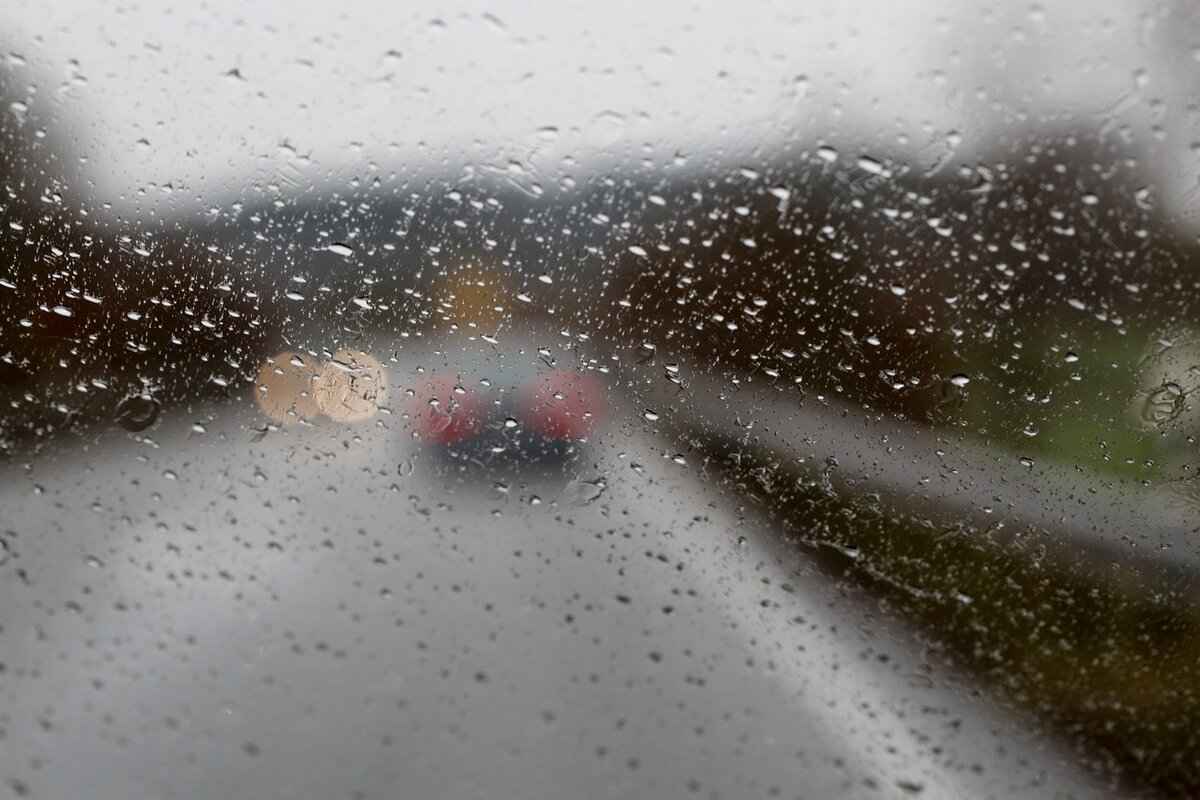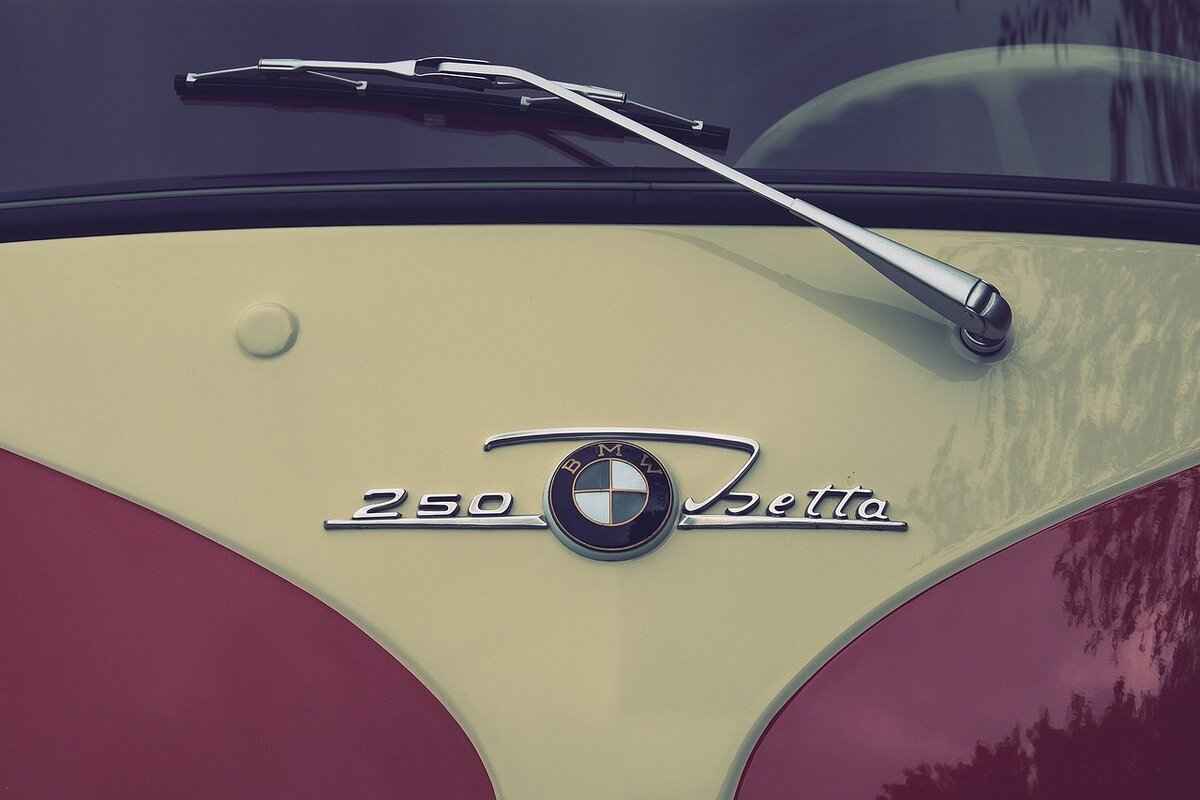This article provides a step-by-step guide on addressing stuck windshield wipers, including troubleshooting tips and solutions to ensure your vehicle remains functional and safe on the road.
What Causes Windshield Wipers to Get Stuck?
Understanding the reasons behind stuck windshield wipers is crucial for effective troubleshooting. Common causes include:
- Mechanical Failure: Wear and tear on wiper components can lead to malfunction.
- Electrical Issues: Problems with the electrical system can disrupt the power supply to the wipers.
- Environmental Factors: Ice, snow, or debris can obstruct wiper movement.
How Can You Troubleshoot Stuck Windshield Wipers?
Troubleshooting stuck windshield wipers involves a systematic approach to identify the root cause. Start by checking:
- The Wiper Switch: This controls the operation of the windshield wipers. If it is faulty, the wipers may get stuck.
- Fuses: A blown fuse can interrupt the wiper’s electrical circuit.
- The Wiper Motor: If defective, it may cause the wipers to remain in one position.
Checking the Wiper Switch
The wiper switch is essential for the operation of the wipers. Testing this switch can help determine if it needs replacement. Look for:
- Visible Damage: Inspect for signs of wear or corrosion.
- Electrical Connections: Ensure that connections are secure and free from corrosion.
Examining the Wiper Motor
The wiper motor is responsible for the movement of the wipers. If it is not functioning correctly, the wipers may get stuck. Here’s how to check:
- Listen for Noises: When activated, the motor should make a sound. Silence could indicate a problem.
- Check for Power: Use a multimeter to test the motor’s voltage.
What Should You Do If the Wipers Are Still Stuck?
If troubleshooting does not resolve the issue, further steps are necessary to safely remove or reset the wipers. Consider:
- Manually Adjusting the Wipers: Carefully try to move the wipers to free them from their stuck position. This should be done slowly to avoid damaging the wiper arms or windshield.
- Seeking Professional Help: If the problem persists after manual adjustments, it may be time to consult a professional mechanic. They can provide a thorough inspection and necessary repairs to restore proper function.
Preventive Measures to Avoid Stuck Wipers
To minimize the chances of your windshield wipers getting stuck in the future, consider the following tips:
- Regular Maintenance: Schedule routine checks for your wiper system.
- Replace Wiper Blades: Change blades every six months to ensure optimal performance.
- Keep the Windshield Clean: Regularly clean the windshield to prevent debris buildup.
By following these steps and understanding the components involved, you can effectively manage stuck windshield wipers and maintain the safety and functionality of your vehicle.

What Causes Windshield Wipers to Get Stuck?
Understanding the reasons behind stuck windshield wipers is crucial for effective troubleshooting. Several factors can contribute to this frustrating issue, ranging from mechanical failures to environmental conditions. By identifying the root causes, vehicle owners can take appropriate measures to restore their wipers to full functionality.
One of the most common reasons for stuck windshield wipers is mechanical failure. This can occur due to:
- Worn Out Wiper Blades: Over time, wiper blades can become brittle and lose their effectiveness, causing them to get stuck.
- Broken Linkage: The linkage that connects the wiper motor to the wiper arms can break or become disconnected, preventing movement.
- Seized Wiper Motor: If the wiper motor is malfunctioning or has seized, it may not provide the necessary power to move the wipers.
Electrical problems can also lead to wipers getting stuck. Here are some common electrical failures:
- Faulty Wiper Switch: If the switch that controls the wipers is damaged, it may not send the correct signals to the motor.
- Blown Fuses: A blown fuse can interrupt the electrical flow, causing the wipers to stop working entirely.
- Corroded Connections: Corrosion on electrical connections can disrupt power supply, leading to intermittent wiper operation.
Environmental conditions can also play a significant role in wiper performance. Some factors to consider include:
- Ice and Snow: Accumulation of ice or snow can physically block the movement of wipers, causing them to get stuck.
- Debris and Dirt: Leaves, dirt, and other debris can obstruct the wiper mechanism, preventing smooth operation.
- Extreme Temperatures: High or low temperatures can affect the materials used in wiper blades and motors, leading to potential failures.
To effectively troubleshoot stuck windshield wipers, start by conducting a thorough inspection:
- Check the Wiper Blades: Inspect for signs of wear or damage.
- Test the Wiper Switch: Ensure it is functioning properly by testing it in different positions.
- Examine the Wiper Motor: Listen for unusual sounds and check for any visible damage.
By understanding these common causes of stuck windshield wipers, vehicle owners can take proactive steps to address the issue. Whether it requires simple troubleshooting or professional assistance, being informed is the first step toward a safer driving experience.

How Can You Troubleshoot Stuck Windshield Wipers?
When you find yourself in a situation where your windshield wipers are stuck, it can be frustrating and potentially dangerous. Understanding how to troubleshoot this issue effectively is essential for maintaining your vehicle’s functionality and safety. This guide will walk you through the steps necessary to diagnose and resolve the problem with your windshield wipers.
Troubleshooting stuck windshield wipers involves a systematic approach to identify the root cause. Here are the key steps to follow:
- Check the Wiper Switch: The wiper switch is crucial for the operation of your windshield wipers. If it malfunctions, the wipers may not respond. Start by turning the switch on and off to see if there is any change in the wipers’ position.
- Inspect the Fuses: A blown fuse can interrupt the power supply to the wiper motor. Locate the fuse box in your vehicle, usually found under the dashboard or in the engine compartment. Consult your owner’s manual to identify the specific fuse for the wipers and check if it needs replacement.
- Examine the Wiper Motor: The wiper motor is responsible for the movement of the wipers. If the motor is defective, it can cause the wipers to get stuck. Listen for any unusual sounds when you activate the wipers; a clicking noise may indicate a problem with the motor.
When inspecting the wiper switch, look for:
- Visible Damage: Check for any signs of wear, cracks, or corrosion on the switch.
- Electrical Connections: Ensure that the connections to the switch are secure and free from corrosion. Loose connections can disrupt the power supply.
If the wiper switch appears to be functioning correctly, the next step is to test the wiper motor:
- Power Supply Check: Use a multimeter to check if the motor is receiving power when the wipers are activated.
- Ground Connection: Ensure that the ground connection for the motor is secure. A poor ground can prevent the motor from operating.
If your windshield wipers remain stuck after these checks, consider the following options:
- Manual Adjustment: Sometimes, gently moving the wipers by hand can free them from their stuck position. Be cautious to avoid damaging the wiper arms or the windshield.
- Professional Assistance: If troubleshooting does not resolve the issue, it may be time to consult a professional mechanic. They can provide a comprehensive inspection and necessary repairs to restore proper function.
By following these troubleshooting steps, you can effectively address issues with stuck windshield wipers, ensuring your vehicle remains safe and functional. Remember to always prioritize safety and consult a professional if you are uncertain about any repairs.
Checking the Wiper Switch
The windshield wiper system is an essential component of vehicle safety, ensuring that drivers maintain visibility in various weather conditions. Among the critical elements of this system is the wiper switch, which controls the operation of the windshield wipers. Understanding how to properly check and troubleshoot this switch can prevent wipers from getting stuck and ensure a smooth driving experience.
The wiper switch is the interface through which the driver activates the windshield wipers. A malfunctioning switch can lead to a variety of issues, including wipers that do not operate at all or that become stuck in one position. Regular checks of this component can help identify problems before they escalate.
- Intermittent Wiper Function: If the wipers only work sporadically, this could indicate a problem with the switch.
- Wipers Stuck in One Position: A faulty switch may prevent the wipers from returning to their resting position.
- Inability to Adjust Speed: If you cannot change the speed settings of the wipers, the switch may be defective.
To determine if the wiper switch needs replacement, follow these steps:
- Visual Inspection: Start by examining the wiper switch for any visible signs of damage, such as cracks or corrosion. A damaged switch can lead to intermittent or complete failure of the wipers.
- Test the Electrical Connection: Ensure that all electrical connections to the wiper switch are secure. Loose or corroded connections can disrupt power supply, causing the wipers to malfunction.
- Use a Multimeter: If you have access to a multimeter, test the switch for continuity. This will help you determine if the switch is functioning correctly.
If your tests indicate that the wiper switch is indeed faulty, it is essential to replace it promptly. A malfunctioning switch not only affects visibility but can also lead to dangerous driving conditions.
Replacing the wiper switch can be a straightforward process if you follow these steps:
- Disconnect the Battery: Always start by disconnecting the vehicle’s battery to avoid any electrical hazards.
- Remove the Steering Column Cover: Use a screwdriver to carefully remove the cover, exposing the wiper switch.
- Unplug the Old Switch: Disconnect the wiring harness from the old wiper switch.
- Install the New Switch: Connect the new switch to the wiring harness and secure it in place.
- Reassemble the Steering Column: Replace the steering column cover and reconnect the battery.
Regular maintenance of your vehicle’s wiper system, particularly the wiper switch, is crucial for ensuring optimal performance. By understanding how to check and replace a faulty switch, you can enhance your driving safety and comfort. If you are unsure about performing these checks or replacements yourself, it is always advisable to seek professional assistance.
Inspecting for Damage
When dealing with windshield wipers, ensuring their proper functionality is crucial for safe driving. One common issue that drivers face is when the wipers become stuck, often due to various mechanical or electrical failures. A key component in this system is the wiper switch, which can significantly affect the operation of the wipers. In this section, we will focus on to the wiper switch and other related components.
The wiper switch is responsible for controlling the speed and operation of your windshield wipers. If the switch is damaged, it can lead to intermittent failures or, in some cases, a complete stop in wiper functionality. This not only affects visibility during rain but can also pose safety risks.
- Visible Wear and Tear: Check for any signs of physical damage such as cracks, breaks, or worn-out surfaces. These signs can indicate that the switch may not function properly.
- Corrosion: Inspect the terminals and connections for any rust or corrosion. Corroded connections can disrupt the electrical flow, leading to wiper malfunctions.
- Loose Connections: Ensure that all wiring connections to the wiper switch are secure. Loose wires can cause intermittent operation, making it difficult to rely on the wipers when needed.
After inspecting for visible damage, the next step is to conduct a functional test of the wiper switch. Here’s a simple method:
1. Turn off the vehicle and disconnect the battery to ensure safety.2. Remove the wiper switch from the dashboard.3. Use a multimeter to test the switch for continuity. 4. If there is no continuity when the switch is activated, it may need to be replaced.
If you discover any signs of damage or malfunction during your inspection, it is important to take action:
- Replace the Wiper Switch: If the switch is damaged or not functioning properly, replacing it is the best solution. Ensure that you purchase a compatible switch for your vehicle model.
- Consult a Professional: If you are unsure about the inspection or testing process, it may be wise to consult with a professional mechanic. They can provide a thorough assessment and ensure that all components are functioning correctly.
Regular inspection of the wiper switch is vital for maintaining the functionality of your windshield wipers. By being proactive and addressing any signs of wear, damage, or corrosion, you can enhance your vehicle’s safety and reliability on the road.
Testing the Electrical Connection
is a crucial step in troubleshooting stuck windshield wipers. A secure electrical connection ensures the proper functioning of the wiper system, which is essential for maintaining visibility during adverse weather conditions. When wipers become unresponsive, it often indicates a problem within the electrical system.
To begin with, locate the wiper switch in your vehicle. This switch is typically found on the steering column or on the dashboard. Once located, the first step is to inspect the connections. Look for any loose wires or signs of corrosion, as these can significantly hinder the power supply to the wipers.
- Visual Inspection: Carefully examine the wiring harness connected to the wiper switch. Ensure that all connectors are firmly seated and that there are no exposed wires.
- Corrosion Check: If you notice any green or white deposits around the connectors, this indicates corrosion. Corroded connections should be cleaned using a suitable electrical contact cleaner.
- Tightening Connections: If any connections appear loose, gently secure them. A tight connection can often resolve the issue of wipers not functioning.
In addition to visual checks, using a multimeter can provide more definitive results. Set the multimeter to the voltage setting and follow these steps:
1. Disconnect the wiper switch from the wiring harness.2. Connect the multimeter probes to the corresponding terminals of the switch.3. Activate the switch while monitoring the multimeter reading.4. A reading of 12 volts indicates a good connection; anything lower may suggest an issue.
If the electrical connections are secure and the multimeter indicates proper voltage, but the wipers still do not operate, the problem may lie with the wiper motor itself. In such cases, further investigation into the motor and its related components is necessary.
It’s also wise to check the fuses associated with the wiper system. A blown fuse can interrupt the power supply, leading to malfunctioning wipers. Locate the fuse box in your vehicle, and refer to the owner’s manual to identify the correct fuse for the wiper system. Replace any blown fuses with ones that match the required amperage.
Ultimately, ensuring that all electrical connections to the wiper switch are secure is a fundamental aspect of vehicle maintenance. By conducting these checks, you can often resolve wiper issues without needing professional assistance. However, if problems persist, it may be advisable to consult a qualified mechanic for a comprehensive diagnosis.
In conclusion, by understanding the importance of secure electrical connections and the steps to troubleshoot them, you can effectively maintain the functionality of your windshield wipers, ensuring safety and visibility on the road.
Examining the Wiper Motor
The wiper motor is a critical component of your vehicle’s windshield wiper system, responsible for the movement of the wipers across the glass. When functioning properly, it ensures that your wipers can clear rain, snow, and debris effectively, providing you with a clear line of sight while driving. However, if the motor becomes defective, it can lead to various issues, including the wipers getting stuck in one position, which can be both frustrating and dangerous.
Identifying a malfunctioning wiper motor early can save you time and money. Here are some common signs to look out for:
- Inconsistent Wiper Movement: If your wipers move sporadically or stop altogether, it may indicate a problem with the motor.
- No Movement: If the wipers do not move at all, the motor may have failed completely.
- Strange Noises: Unusual sounds, such as grinding or clicking, can suggest mechanical issues within the motor.
Diagnosing issues with the wiper motor requires a systematic approach. Here are some steps to follow:
- Check the Power Supply: Use a multimeter to test the electrical connections to the wiper motor. If there is no power, the issue may lie in the wiring or the wiper switch.
- Inspect the Motor: Look for any visible signs of damage, such as corrosion or burnt components. If the motor appears damaged, it may need to be replaced.
- Test the Motor: If power is reaching the motor but it still does not operate, you may need to remove it from the vehicle and test it directly.
If you have determined that the wiper motor is indeed defective, there are a few options available:
- Replace the Motor: The most effective solution is to replace the faulty motor with a new or refurbished one. Ensure that you purchase a motor compatible with your vehicle’s make and model.
- Seek Professional Help: If you are uncomfortable performing the replacement yourself, consider taking your vehicle to a professional mechanic. They can ensure that the installation is done correctly and safely.
To avoid issues with your wiper motor in the future, regular maintenance is essential. Here are some tips:
- Keep the Wipers Clean: Regularly clean your wiper blades and windshield to prevent debris from causing strain on the motor.
- Use Quality Wiper Blades: Invest in high-quality wiper blades that can withstand various weather conditions without putting excessive pressure on the motor.
- Check for Electrical Issues: Regularly inspect the electrical connections and wiring associated with the wiper system to catch any potential issues early.
By understanding the importance of the wiper motor and how to troubleshoot issues, you can ensure that your windshield wipers function properly, keeping you safe on the road.

What Should You Do If the Wipers Are Still Stuck?
When faced with the frustrating situation of stuck windshield wipers, it’s essential to take a methodical approach to resolve the issue. If your initial troubleshooting efforts do not yield results, there are several additional steps you can take to safely remove or reset the wipers. This guide will delve into these further actions, ensuring you understand the best practices to follow.
If your windshield wipers remain stuck after basic troubleshooting, consider the following methods:
- Manual Adjustments
- Checking for Obstructions
- Inspecting Wiper Components
- Seeking Professional Assistance
One of the first steps you can take is to attempt manual adjustments to the wipers. Carefully try to move the wipers back into their resting position. It’s important to do this gently to avoid causing any damage to the wiper arms or the windshield. If the wipers are frozen due to ice or snow, ensure that you clear any buildup before attempting to move them.
Sometimes, environmental factors can cause wipers to become stuck. Inspect the area around the wipers for any debris, ice, or other obstructions that may be preventing movement. Removing these obstacles can often restore functionality.
If manual adjustments and obstruction removal do not resolve the issue, it may be necessary to inspect the wiper components. This includes checking the wiper arms, linkage, and motor. Look for signs of wear, rust, or damage that could be affecting performance. If you notice any broken parts, they will need to be replaced to restore proper operation.
If all else fails and the wipers remain non-functional, it may be time to consult a professional mechanic. A qualified technician can perform a thorough inspection and diagnose any underlying issues that may not be immediately apparent. They have the tools and expertise to safely remove or reset the wipers without causing further damage to your vehicle.
In conclusion, dealing with stuck windshield wipers can be a hassle, but by following these steps, you can effectively address the issue. Whether through manual adjustments, checking for obstructions, inspecting components, or seeking professional help, it’s crucial to ensure your vehicle remains safe and functional on the road.
Manually Adjusting the Wipers
When dealing with windshield wipers that are stuck, one of the most practical solutions is to manually adjust the wipers. This technique can often free them from their immobile state, allowing for a quick resolution to the problem. However, it is essential to approach this process with care and caution to prevent any potential damage to the wiper arms or the windshield itself.
Before attempting to manually move the wipers, ensure that the vehicle is turned off and the keys are removed from the ignition. This precaution helps to avoid any accidental activation of the wipers while you are working on them. Here are some steps to follow:
- Assess the Situation: First, take a moment to inspect the wipers and their surrounding area. Look for any visible obstructions, such as ice or debris, that may be preventing the wipers from moving.
- Gently Move the Wipers: With both hands, grasp the wiper arm near its base. Apply a gentle upward force to lift the arm away from the windshield. If the wiper is still stuck, you may need to wiggle it slightly from side to side to help dislodge it.
- Check for Resistance: If you encounter significant resistance while trying to move the wipers, stop immediately. Forcing the wipers can lead to damage, so it’s important to identify the root cause of the issue before proceeding.
- Inspect the Wiper Mechanism: After attempting to move the wipers, take a closer look at the wiper mechanism under the hood. Check for any broken or disconnected parts that may be causing the malfunction.
- Test the Wipers: Once you believe the wipers are free, turn on the vehicle and activate the wipers to see if they function properly. If they still do not move, further investigation may be necessary.
In some instances, the wipers may be stuck due to electrical issues or a malfunctioning wiper motor. Therefore, if manual adjustments do not resolve the issue, it may be prudent to consult a professional mechanic. They can perform a thorough inspection and provide the necessary repairs.
It’s also worth noting that regular maintenance can help prevent wiper issues. Keeping the windshield clean, ensuring the wiper blades are in good condition, and checking the wiper fluid can all contribute to the smooth operation of your vehicle’s wipers. By being proactive, you can minimize the chances of encountering stuck wipers in the future.
In summary, manually adjusting stuck windshield wipers can be an effective solution, but it must be done carefully. Always prioritize safety and consider professional assistance if the issue persists. Understanding the mechanics behind your vehicle’s wipers will empower you to handle minor issues effectively.
Seeking Professional Help
If you find that your windshield wipers remain stuck despite your attempts at troubleshooting, it may be time to consider seeking professional help. While DIY fixes can often resolve minor issues, persistent problems may indicate deeper mechanical or electrical failures that require the expertise of a trained mechanic.
Consulting a professional is crucial when dealing with complex automotive issues. Here are a few reasons why:
- Thorough Inspection: A professional mechanic has the experience and tools necessary to conduct a comprehensive inspection of your vehicle’s wiper system. They can identify issues that may not be immediately visible to the untrained eye.
- Accurate Diagnosis: Mechanics are trained to diagnose problems accurately. They can determine whether the issue lies with the wiper motor, electrical connections, or even the wiper blades themselves.
- Quality Repairs: Once the problem is identified, a professional can perform the necessary repairs using high-quality parts. This ensures that your windshield wipers function effectively and safely.
When you take your vehicle to a mechanic for a wiper issue, here’s what you can generally expect:
- Initial Assessment: The mechanic will first ask about the symptoms you’ve observed. Be prepared to explain when the wipers got stuck and any troubleshooting steps you’ve already taken.
- Visual Inspection: The mechanic will conduct a visual inspection of the wiper arms, blades, and motor. They will look for signs of wear, corrosion, or damage.
- Electrical Testing: Using specialized tools, the mechanic will test the electrical components, including the wiper switch and motor connections, to ensure they are functioning correctly.
- Functional Testing: After repairs, the mechanic will perform a functional test of the wipers to confirm that they operate smoothly and effectively.
Selecting the right mechanic is essential for ensuring quality service. Here are some tips:
- Check Reviews: Look for mechanics with positive customer reviews and testimonials. This can give you insight into their reliability and quality of work.
- Certifications: Ensure that the mechanic is certified and has experience with your vehicle’s make and model.
- Get Estimates: Before agreeing to any repairs, ask for a detailed estimate. This should include parts and labor costs to avoid surprises.
In summary, while it can be frustrating to deal with stuck windshield wipers, seeking professional help is often the best course of action when troubleshooting fails. A qualified mechanic can provide the expertise needed to resolve the issue effectively, ensuring your vehicle remains safe and functional on the road.
Frequently Asked Questions
- What should I do if my windshield wipers won’t turn off?
If your windshield wipers get stuck and won’t turn off, first check the wiper switch and fuses. Sometimes, a simple reset of the wiper motor or switch can do the trick. If that doesn’t work, you may need to manually adjust them or consult a mechanic.
- Can weather conditions cause my wipers to get stuck?
Absolutely! Heavy snow, ice, or even debris can obstruct the movement of your wipers. It’s like trying to run in a snowstorm—sometimes, you just can’t move! Always clear your windshield before using the wipers to prevent this issue.
- How can I tell if my wiper motor is malfunctioning?
Signs of a malfunctioning wiper motor include unusual noises, the wipers moving slowly or not at all, or getting stuck in one position. If you notice any of these symptoms, it’s best to have it checked out to avoid further complications.
- Is it safe to manually adjust stuck windshield wipers?
Yes, but you need to be cautious! Gently try to move them back to their resting position. Just like untangling a knot, you want to be careful not to cause any damage to the wiper arms or the windshield itself.














